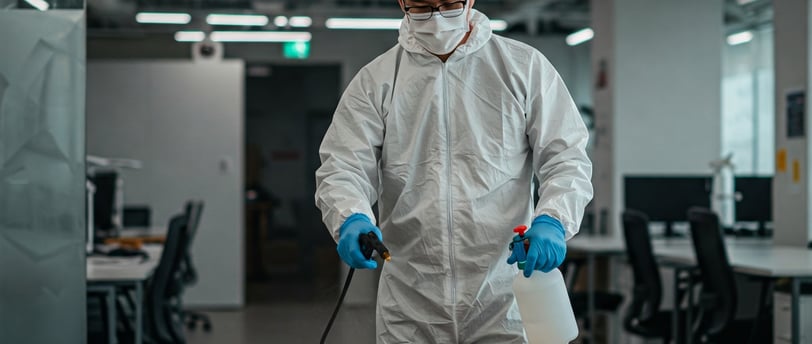Creating a Blog Page: Tips for Engaging Content and Effective Linking
5/8/20242 min read


The Importance of Sanitization in Today's Workplaces
In our increasingly interconnected world, the workplace has become a central hub of activity, fostering collaboration and innovation. However, this close proximity also presents a significant challenge: the potential spread of illness. Maintaining a sanitized workplace is no longer a mere matter of aesthetics; it's a critical component of safeguarding employee health, boosting productivity, and upholding a professional image.
Why Sanitization Matters:
Protecting Employee Health:
The primary function of sanitization is to minimize the presence of harmful pathogens, including bacteria and viruses. Regular disinfection of high-touch surfaces, such as doorknobs, keyboards, and shared equipment, significantly reduces the risk of transmission.
In environments where large numbers of people congregate, even minor illnesses can quickly spread, leading to widespread absenteeism and disruptions.
For individuals with compromised immune systems, a sanitized workplace can be the difference between staying healthy and facing serious health complications.
Enhancing Productivity:
When employees feel safe and secure in their work environment, they are more likely to be focused and productive.
Conversely, a workplace perceived as unclean or unsanitary can lead to anxiety, stress, and decreased morale.
By reducing the incidence of illness, businesses can minimize sick days and maintain a consistent level of operational efficiency.
Upholding a Professional Image:
A clean and sanitized workplace reflects a commitment to professionalism and attention to detail.
Clients and visitors are more likely to form a positive impression of a business that prioritizes hygiene.
In industries where hygiene is paramount, such as healthcare and food service, sanitization is not just a best practice; it's a regulatory requirement.
Creating a safe enviroment:
By having a clean work place, it helps to create a safe enviroment for your employees. This will help to reduce workplace accidents, and promote better air quality.
Key Areas of Focus:
High-Touch Surfaces:
These are the most common vectors for germ transmission and require frequent disinfection. Examples include:
Door handles and light switches.
Keyboards and mice.
Phones and shared office equipment.
Elevator buttons and handrails.
Common Areas:
Break rooms, restrooms, and conference rooms are high-traffic areas that require rigorous cleaning and sanitization.
These areas often contain shared amenities, such as coffee machines and water dispensers, which can harbor germs.
Workstations:
Individual workspaces should be cleaned and disinfected regularly, especially in shared office environments.
Encouraging employees to maintain personal hygiene practices, such as handwashing and using hand sanitizer, is also essential.
Best Practices for Effective Sanitization:
Use EPA-Approved Disinfectants:
Ensure that cleaning products are effective against a broad spectrum of pathogens.
Follow manufacturer instructions for proper application and contact time.
Implement Regular Cleaning Schedules:
Establish a consistent cleaning and disinfection routine to ensure that all areas are addressed.
Pay particular attention to high-touch surfaces and common areas.
Promote Employee Hygiene:
Encourage employees to practice good hygiene habits, such as handwashing and covering coughs and sneezes.
Provide access to hand sanitizer and other hygiene products.
Professional Cleaning Services:
Engaging a professional commercial cleaning service, like Prime Commercial Cleaning & Facilities Management, ensures that your workspace is thoroughly sanitized using industry-leading techniques and products.
Professional cleaners have the knowledge and equipment to address even the most challenging sanitization needs.
By prioritizing sanitization, businesses can create a healthier, safer, and more productive work environment for their employees.
Contact
Contact
Contact
